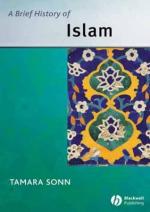|
This section contains 519 words (approx. 2 pages at 300 words per page) |

|
Oral Epics. An abiding, popular form of colloquial poetry is the epic form produced spontaneously along particular story lines by illiterate poets. Arabic epics bear comparison with the Greek Iliad and Odyssey of Homer in length, form, and content; indeed, the Arabic epics are longer than Homer's. All such epics have three principal characteristics: they are heroic, poetic, and narrative. While they have well-known story lines like folktales, these oral epics do not have fixed texts. Rather, they are told differently every time they are narrated, even by the same poet on different occasions. In his recitation the oral poet makes use of various stock phrases called "formulaic language." The classical Arabic oral epics include Sirat 'Antar (Romance of Antar), which dates as early as the twelfth century; Sirat Abi Zayd al-Hilali (Romance of Abi Zayd al- Hilali), including a fictional...
|
This section contains 519 words (approx. 2 pages at 300 words per page) |

|




